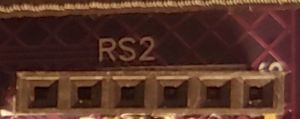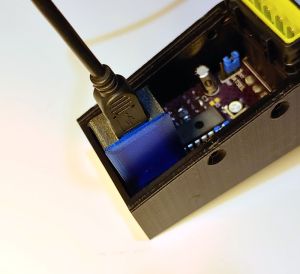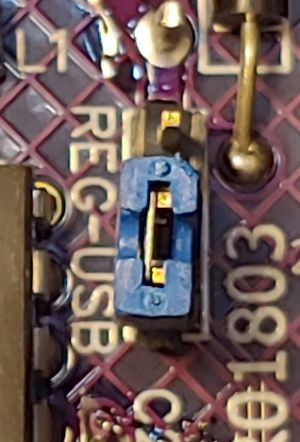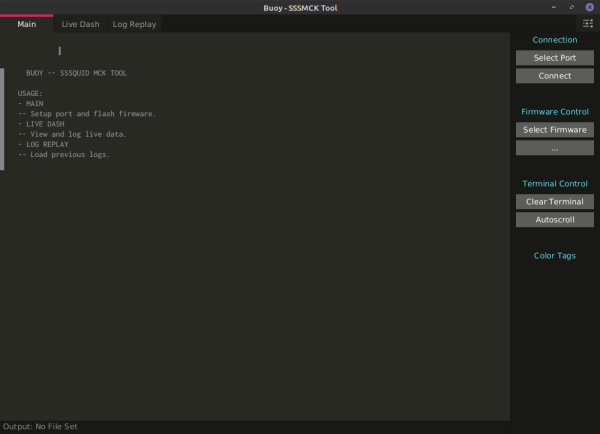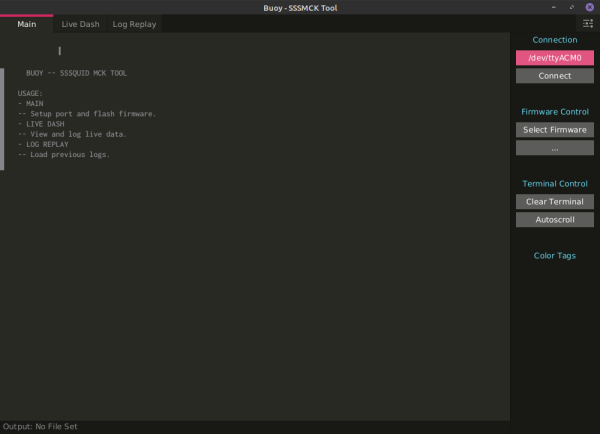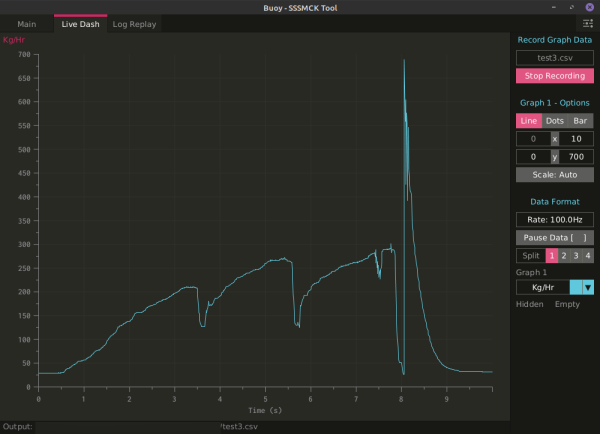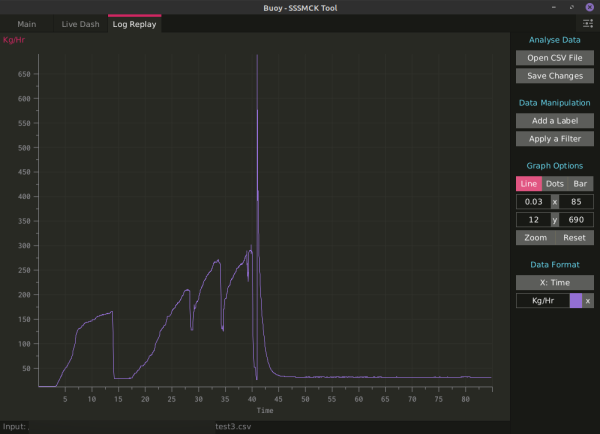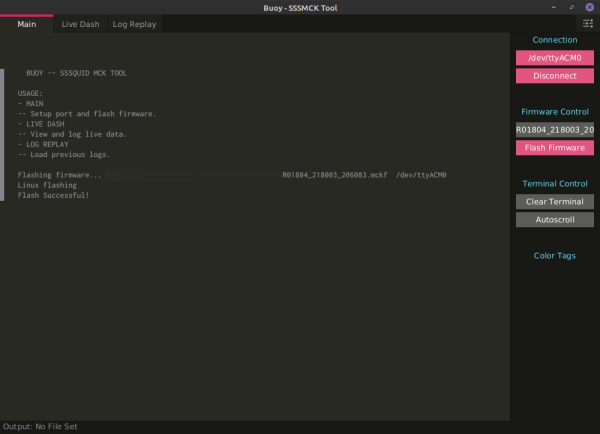|
|
| Line 1: |
Line 1: |
| =Fuel Ratings= | | =Introduction= |
| *What’s the difference between the rating (octane) choices (like 87, 89, or 93 AKI)? Is one better than the other?
| |
| **Octane ratings refer to the rate at which your fuel mixture combusts; in other words, the difficulty in which the fuel mixture will ignite. A fuel with a higher AKI (anti-knock index) or RON (research octane number) is commonly referred to as a higher octane fuel. As we decrease the rate at which the fuel combusts, we increase the range over which the combustion phase produces thermodynamic force against the piston. Tuned correctly, a higher octane rated fuel will have the potential for a greater efficiency of material used to engine stroke.
| |
| **However, many standard, stock engines do not require high octane fuel, and often will see little/no benefit from running high octane fuel. This is because they do not create conditions which cause the fuel mixture to combust at a rate too quick for its stroke, or cause it to combust before the spark plug is fired. Lower compression, naturally aspirated engines generally will not see much of a benefit running fuels above 91 or 93 AKI.
| |
| **On some builds, such as forced induction or high compression builds, a higher octane fuel becomes necessary to combat pre-detonation — where residual heat coupled with extreme compression causes the air/fuel mixture to combust before the spark plug is fired, or cause the mixture to combust too quickly and act against the piston and crankshaft. If you are unsure about any of this, please contact us with any questions!
| |
| *If I order a tune for 93 AKI (octane), can I run a lower rating?
| |
| **All of our tunes are completely reworked, from idle to full throttle to match your mods, fuel choice, and goals. While running one rating lower (e.g. 89 with a 91 tune) if you are driving calmly is generally considered okay, running anything more than R_2 = R_1 – 2 (e.g. 93 – 2 = 91) can cause issue, even at part throttle, as most/all tunable parameters have been adjusted to match the specific fuel you chose.
| |
| **On a modern, OBD-2 vehicle with knock sensors and dynamic ignition adjustment, this is generally considered more acceptable, but still not ideal. However, on older vehicles (mostly pre-1996) without knock sensors, running a lower octane-rated fuel can be detrimental and dangerous.
| |
| *What about running a higher rating on a lower octane tune (eg. 93 AKI fuel with an 87 AKI tune)? Will I get more power?
| |
| **This depends upon your vehicle. On OBD-2 vehicles and those with knock-controlled dynamic advance, running a higher octane may allow for more dynamic ECU advance and may offer a slight bump. This is not always the case -- many OBD-2 ECUs will operate at maximum dynamic advance unless there is knock or other issues detected, so running higher octane fuel will not allow for further advance.
| |
| **On older vehicles (mostly pre-1996) with OBD-1 or earlier ECUs without dynamic knock advance, running a higher octane may actually decrease your power as the dynamic compression points of the combustion phase have now changed, and more of the combustion phase may be wasted.
| |
| *Do I need to run 92/93 AKI (97/98 RON)?
| |
| **This depends on about a thousand factors. A vehicle with high compression or that is forced induction generally requires a higher octane fuel (91+) to combat pre-detonation and knock. However, a stock E30 318i does not necessarily need more than an 87 octane rating, and has very little to gain from 93 or above without doing supporting mods.
| |
| **For highly modified, high compression (>10:1), or F/I vehicles — we recommend at least 91 AKI (95 RON), with 93 (97/98 RON) being the optimal pump octane.
| |
| ***It is worth noting that we regularly tune high compression or high boost (20+ PSI) for octane as low as 87 AKI (90-91 RON). High ratings are not strictly necessary, but allowable aggressiveness of tuning is directly correlated to octane rating -- higher rating means higher tuning possibility.
| |
| **For mostly-stock, standard compression vehicles (8.5-10:1) — we recommend 89 AKI (92-94 RON).
| |
|
| |
|
| ==AKI vs RON==
| | Buoy is an all-in-one data-logging and tuning tool for the SSSMCK (SSSQUID MAF CONVERSION KIT). It is in beta stages and as such may have bugs. Please [https://sssquid.com/v3/contact contact us] with any bugs you may encounter. |
|
| |
|
| If you are in the USA, Canada, or Brazil, you will use AKI ratings. If you reside in the rest of the world, you will most likely use RON. If you're unsure, check what your fuel pump says (it should specify the rating system used to determine the advertised octane) or simply do an internet search.
| | This tool was developed in and for Linux first. The Windows port is in very early stages and will naturally have more bugs than the Linux flavor. There is no version for Mac OSX and we do not have any plans to ever release a version for that OS. |
|
| |
|
| *What is AKI?
| | Expect new software to be released regularly. We have not implemented any auto-update functions yet. Please bookmark this page to get quick access to the latest software. |
| **AKI stands for Anti-Knock Index, and is the standard fuel rating system used in the USA, Canada, Brazil, and a few other countries.
| |
| **AKI is calculated by adding RON and MON, then dividing by 2: (R+M)/2
| |
| *What is RON?
| |
| **RON stands for Research Octane Number, and is the standard fuel rating system used in most of the rest of the world.
| |
| **It is tested at a lower temperature and RPM than MON. You can generally subtract 8 to 12 from this number to convert to MON.
| |
| *What is MON?
| |
| **MON stands for Motor Octane Number, and it is another method of determining the combustion resistance of fuel. It is not generally used as a rating you will see at a pump, other than within AKI (which is a factor of RON and MON).
| |
| **It is tested at a higher temperature and higher RPM than RON. You can generally add 8 to 12 to this number to convert to RON.
| |
| *How do these compare?
| |
| **Generally you can subtract RON by 4 to 6 in order to equal AKI. This is not always true as the testing methods of the two ratings are different.
| |
|
| |
|
| ==E85== | | =Download= |
| *I want to run E85 because the internet tells me it’ll add 8723542834 Hp! | | Latest Version: 0.18.07 |
| **If you are running a stock naturally aspirated lower compression engine (<11:1 CR), this is most likely wrong! E85 (or fuel that is around 85% ethanol) contains about 30% less energy content that ethanol-free fuel. E85 will give most users lower MPG and lower Hp than E-free or E10 fuel, especially those on engines and electronics not designed for flex-fuel from the factory. | | *Windows |
| **In addition, for every 1-unit of gasoline your car would use to make x power level, your car now must use 1.3-units of E85 to make that same power level. | | **32-bit (JRE required) - [https://sssquid.com/strg/sssmck/buoy/buoy-001807-win32.zip Download] |
| *Then who should use E85? | | **64-bit (recommended for most users! Pre-compiled JRE included) - [https://sssquid.com/strg/sssmck/buoy/buoy-001807-win64.zip Download] |
| **Anyone that wants to use a renewable resource to power their vehicle. | | *Linux |
| **Anyone running high amounts of compression or forced induction positive pressure | | **32-bit - [https://sssquid.com/strg/sssmck/buoy/buoy-001807-lin32.tar Download] |
| ***E85’s greatest attribute is that it has a combustion phase equivalent to an AKI (Anti-Knock Index) of around 102-112, and its combustion phase is cooler than that of traditional gasoline. This means we can give knock-limited vehicles a longer combustion phase and/or cooler temps. It also often allows for more positive pressure in F/I vehicles, as we are not as limited by heat-induced pre-ignition.
| | **64-bit - [https://sssquid.com/strg/sssmck/buoy/buoy-001807-lin64.tar Download] |
| ***This is not the case for your sub-200 WHp, lower compression, naturally aspirated BMW. You will see higher numbers sticking with E-free or E10 fuel. | | **arm32 - coming soon, please contact for early access |
| | **arm64 - coming soon, please contact for early access |
|
| |
|
| Read more:
| | Previous versions available by request, though you should most likely be using the latest version! |
| *[https://www.dynojet.com/blog/e85-fuel-more-power-or-more-problems/ E85 FUEL: MORE POWER OR MORE PROBLEMS? dynojet.com]
| |
| *[https://fuelandfriction.com/weekend-warrior/e85-dont-do-it-unless-you-know/ E85 Don't Do It! fuelandfriction.com]
| |
|
| |
|
| ===Advantages===
| | [[SSSMCK/BUOY/Version_History|Version History]] |
| The largest advantage of E85 is that it is made from about 85% renewable resources. An issue with that, however, is that it is usually made from monoculture crops that often use massive amounts of fertilizer and pesticides. It also still outputs very similar emissions to traditional petroleum.
| |
|
| |
|
| In terms of performance, the largest advantage of E85 is its high anti-knock rating, generally about 102-112 AKI. This means that vehicles which require and can take advantage of "high octane" fuel can be tuned more aggressively, such as high compression (>11:1) or forced induction vehicles. This does not apply to your stock engine M42 or M20, which generally operate best with fuel rated at 89-91 AKI (92-95 RON).
| | ==Installation== |
| | This program is designed to be portable -- there is no installation necessary. Simply extract the compressed folder contents to its own directory and run "Buoy.sh" (Linux) or "Buoy.exe" (Windows). |
|
| |
|
| ===Disadvantages===
| | For the 32-bit Windows version of Buoy, the necessary JRE (Java Runtime Environment) is not pre-packaged. You may need to install the JRE if you haven't already: [https://docs.oracle.com/goldengate/1212/gg-winux/GDRAD/java.htm Java JRE]. The JRE is pre-packaged on the 64-bit version (what most everyone will be using). Unless you are running an older 32-bit version of Windows (like 32-bit XP), it is recommended to use the 64-bit version. |
| The #1 disadvantage to using E85 is its highly corrosive and reactive nature. This tends to cause corrosion and rust in many traditional metals, and vehicles produced to use E85 from the factory come with specific engine component coating, fuel lines, fuel pumps, and injectors in order to combat this. | |
|
| |
|
| The corrosive nature of oxygenated ethanol also wreaks havoc with traditional rubber hoses and some o-rings. Converting your vehicle safely to E85 necessitates changing, at the very least: fuel pump, fuel lines, and any incompatible fittings. However, also expect reduced metal component and injector life.
| | For Linux users, Java is required to run but is not prepackaged. Many flavors of Linux will come with the necessary runtime environments pre-installed, but if you're not sure you can check with your package manager. |
|
| |
|
| For a short period of time we used E85 during injector refurbishment, but began quickly running into serious problems where, if the injectors were not installed and used very quickly, the internals and some external areas would begin to rust, and if they were exposed to air for more than 5-7 days they became inoperable from rusted internals. This is not just a problem with vehicles, but with many industries that use ethanol-based fuels or fluids against untreated metals and some rubbers and plastics.
| | ==Drivers== |
| | Most flavors of Linux will come pre-installed with the necessary drivers. |
|
| |
|
| Using E85 also means you need to use at least 30% more fuel to produce the same thermodynamic force as E0 fuel. For endurance racing, this can be catastrophic.
| | For Windows, you may need to install the standard FTDI D2XX drivers available at the following link: [https://ftdichip.com/drivers/d2xx-drivers/ FTDI D2XX Download Page] |
|
| |
|
| =Fuel Pump= | | =Interface= |
| *I want to add a high flow fuel pump to my car for more power! | | *Main |
| **Fuel pumps do not add more power. | | **Setup port, flash firmware, and view diagnostic information. |
| *I want to add a high flow fuel pump to my stock E30! | | *Live Dash |
| **Do not do this! The stock 325i E30 pump supports 230-280 WHp depending on your setup. | | **View and log live airflow data. |
| **Adding a higher flowing pump when it's not necessary will: | | *Log Replay |
| ***wear the pump quicker | | **View previously recorded logs with many ways to manipulate and filter the data. |
| ***wear the FPR quicker
| |
| ***wear the filter quicker
| |
| ***add excessive heat to fuel tank and fuel
| |
| ***can add excessive fuel pressure which throws off your tune (this is less common on systems with a fuel return, but can still overload an FPR)
| |
| ***use more power which wastes engine load
| |
| **ONLY add a pump if it’s necessary to keep up with the fuel requirements of your engine!
| |
| **We have a comprehensive wiki page on choosing fuel pumps here: [[Fuel_Pump|FUEL PUMPS]]
| |
|
| |
|
| =Tuning Options= | | =Usage= |
|
| |
|
| ==Burble== | | ==Connecting== |
| Burble and backfire are possible to a degree within the software of most vehicles. There is no performance benefit from this, it is purely stylistic and often leads to premature engine wear.
| |
|
| |
|
| Burble tunes cause the air-fuel mixture to fire against piston movement so it can be expelled through the exhaust valve while still combusting. This leads to increased engine wear and can destroy catalytic converters, gaskets, and sensors quickly.
| | With the top cover removed, you will need to find a 6-pin header. This is where the logging/flashing module will be plugged. |
|
| |
|
| If you have a turbocharged engine, this can destroy the seals and gaskets very quickly which will lead to oil and coolant leaking through the turbo and into the exhaust or even intake.
| | [[File:Loggingmoduleport.jpg|center|thumbnail]] |
|
| |
|
| *Can you tune for off-throttle “burble” or “pop-pop”?
| | Plug in your logging/flashing module. It can only be inserted in one direction. |
| **On most every vehicle, yes. And yes, this includes the BMW M20B20/3/5 and M30B34/5 engines.
| |
| **This increases the engine breaking effect, which many people consider to “ruin” off-throttle response for daily driving. For most daily-driven vehicles we will tune burble to only be active above a certain RPM (usually only active above the 3400 RPM range), so this is not as affecting to most daily engine speeds.
| |
| **Absolutely never use a burble/backfire tune with a catalytic converter. It will lead to the failure of your catalytic converter and may lead to it becoming clogged (which reduces overall engine health and may cause engine damage).
| |
| ***A very mild burble is generally considered okay when using a high-flow catalytic converter, but it's still not recommended. It will lead to the premature failure and may lead to it becoming clogged (which reduces overall engine health and may cause engine damage).
| |
| *I want aggressive and loud popping with the possibility of flame!!
| |
| **Off-throttle pops and flames will wear your engine, gaskets, and sensors quicker, which can lead to earlier engine failure.
| |
| **If running a catalytic converter, DO NOT DO THIS. The heat can approach 1500’f — well above the 1200’f failure point of a catalytic converter. Simply a few seconds of temperatures over 1200’f will destroy a catalytic converter.
| |
| **While a quick burst of minor flame may occur, do not expect a WRC or Fast and Furious style flamethrower from your exhaust system. Read more below....
| |
| *What about WRC cars and the $2.5 million dollar Le Mans Ford GT40 or the $75,000 Audi S7? They burble and pop!
| |
| **Yes, you are correct, but each of these cars is equipped with a specific system that does this for a reason. On race cars (like Le Mans and WRC vehicles, whose engines only need to last a single race or a few events), a secondary throttle valve is installed, and often an auxiliary injector(s) is installed in the exhaust/turbo manifold in order to specifically ignite fuel outside of the engine cylinders, but before the turbocharger, in order to generate force against the turbine. This keeps the turbine spinning and charge-pipe pressure up, even when your foot is off-throttle. This is known as "anti-lag". If this interests you, we recommend doing an internet search for “anti-lag system”.
| |
| **On some newer sports cars (though this is becoming less common due to emissions standards), an auxiliary injector is installed in the exhaust system that dumps fuel into a relatively safe spot after the catalytic converter in order to generate the burble sound as the exhaust gas gradually ignites the fresh fuel.
| |
| ***Similarly, many of the YouTube videos you see of cars shooting huge flames have these systems, and this does not happen within the tune.
| |
| **Without these systems, burble will directly affect off-throttle reaction in order to ignite fuel as it exits the cylinder. Unfortunately this can lead to both increased intake/exhaust manifold back-pressure, and can ruin quick off-on-throttle response. This also means the ignition event at least partially happens against the action of the piston (as it moves the mixture out of the exhaust valve). So, rather than engine braking happening because of the vacuum generated by pulling air into the cylinder and from compression, engine braking is added to by directly firing against the piston’s movement. This both increases the engine braking effect and engine wear, possibly leading to damaged pistons, conrods, and other components.
| |
|
| |
|
| ==Fuel Cut-off and Reinstatement== | | [[File:Loggingmoduleconnected.jpg|center|thumbnail]] |
| *We have received a few requests for a softer “off-throttle” operation on a few vehicles. This is generally desirable for people that live in slow-traffic areas (such as: New York, Paris, London, Tokyo, or Sydney). It is possible for this feature to be added, but by request only. Please contact us to get setup.
| | |
| **By default, most older (pre-1996) vehicles have a rather quick release in off-throttle operation, which makes for quick deceleration response. However some people prefer a softer off-throttle response when driving in heavy traffic and at low speeds, as is normal with modern, electronic-throttle vehicles.
| | Connect the USB cable to your computer. If you are logging, please skip the next step. |
| **Please note: utilizing a softer off-throttle response will add extra fuel to your exhaust system, which can lead to quicker catalytic converter failure over time. While not always the case, excess fuel can build-up in, or combust against the catalytic converter, causing damage. It will also slightly decrease your overall fuel economy.
| | |
| | ONLY if you are flashing the module!: it is recommended to use the USB power. You can do this by moving the "REG-USB" jumper from the "REG" side to the "USB" side as pictured below: |
| | |
| | [[File:Usbpowerselected.jpg|center|thumbnail]] |
| | |
| | Once you finish flashing, please make sure to move this jumper back to the "REG" side before continuing use on your vehicle. |
| | |
| | On the "Main" tab you will find the connection and flashing options. |
| | |
| | [[File:Buoy001804_main.png|center|thumbnail|600px]] |
| | |
| | First you will need to select the correct port. Click on "Select Port" and you will be presented with a list of available ports. |
| | |
| | If you are unsure of which port the SSSMCK is connected through, you can simply disconnect the device and reconnect it to see which port is added and removed. The list automatically updates. |
| | |
| | [[File:Buoy001804_portselected.png|center|thumbnail|600px]] |
| | |
| | Once the port is selected, click "Connect". It will take 2 seconds to connect, do not repeatedly click the "Connect" button during this time period. The SSSMCK should connect and automatically start sending airflow data. If data is not graphed on the "Live Dash" page, you can try disconnecting and reconnecting. |
| | |
| | ==Data-logging== |
| | Once connected the SSSMCK should automatically begin transmitting airflow data to the program. This is displayed in kilograms per hour (Kg/Hr). |
| | |
| | [[File:BUOY001804_LIVEGRAPH.png|thumbnail|center|600px]] |
| | |
| | On this page you can set an output file. Use the file extension ".csv" for logs (this file extension should automatically be added, but there is a bug in Windows where if your file path has one or more periods it may not be automatically added). |
| | |
| | Once you have set the output file, you may begin logging by selecting "Start Recording". Once you are finished recording, select "Stop Recording" or simply close the program. |
| | |
| | There are many ways to display the data, as a line (recommended and default), as dots, or as bars. The rest of the options are primarily for further diagnostics when necessary, but should not be needed or used by most users. |
| | |
| | ===Log Replay=== |
| | If you would like to view previously recorded logs, you can open them a number of ways. They are output as simple CSV files (Comma Separated Values). These can be read by programs such as OpenOffice/LibreOffice Calc, Microsoft Excel, or within Buoy. |
| | |
| | To open a previously recorded log, select "Open CSV File" and browse to the folder where the log was recorded. Select and open the log to populate the graph. |
| | |
| | [[File:BUOY001804_LOGREPLAY.png|thumbnail|center|600px]] |
| | |
| | You can manipulate the data, apply filters, change how it is displayed, and more by using the "Graph Options" and "Data Manipulation" sections. |
| | |
| | ==Flashing== |
| | |
| | On the "Main" page, make sure you have the proper port selected and are connected to the SSSMCK. Under "Firmware Control" click on "Select Firmware" to be presented with a file explorer. Navigate to the firmware (file extension ".mckf") you wish to flash to the device and select it. |
| | |
| | [[File:R001804_flashing.png|center|thumbnail|600px]] |
| | |
| | Once you have chosen the firmware, the button underneath it will change to "Flash Firmware". Click this button to flash the firmware. A success or failure message will be displayed in the console log. |
| | |
| | ==Configuration== |
| | You can configure most of the program's settings, such as the theme and interface scaling, by clicking on the settings icon in the upper-right side of the application. |
| | |
| | =Firmware= |
| | |
| | ".MCKF" files contain the calibrations for the MAF and VAM selected. Since we are constantly releasing new versions, please [https://sssquid.com/v3/contact contact us] with your required MAF and VAM combination and your hardware version, we will reply with a download of the latest available software. |
| | |
| | All units ship with the proper and latest available firmware for your selected MAF and VAM, so there is no need to flash a new unit unless you are changing vehicles/tunes/MAFs, there are fixes, or the latest software requires it. |
Introduction
Buoy is an all-in-one data-logging and tuning tool for the SSSMCK (SSSQUID MAF CONVERSION KIT). It is in beta stages and as such may have bugs. Please contact us with any bugs you may encounter.
This tool was developed in and for Linux first. The Windows port is in very early stages and will naturally have more bugs than the Linux flavor. There is no version for Mac OSX and we do not have any plans to ever release a version for that OS.
Expect new software to be released regularly. We have not implemented any auto-update functions yet. Please bookmark this page to get quick access to the latest software.
Download
Latest Version: 0.18.07
- Windows
- 32-bit (JRE required) - Download
- 64-bit (recommended for most users! Pre-compiled JRE included) - Download
- Linux
- 32-bit - Download
- 64-bit - Download
- arm32 - coming soon, please contact for early access
- arm64 - coming soon, please contact for early access
Previous versions available by request, though you should most likely be using the latest version!
Version History
Installation
This program is designed to be portable -- there is no installation necessary. Simply extract the compressed folder contents to its own directory and run "Buoy.sh" (Linux) or "Buoy.exe" (Windows).
For the 32-bit Windows version of Buoy, the necessary JRE (Java Runtime Environment) is not pre-packaged. You may need to install the JRE if you haven't already: Java JRE. The JRE is pre-packaged on the 64-bit version (what most everyone will be using). Unless you are running an older 32-bit version of Windows (like 32-bit XP), it is recommended to use the 64-bit version.
For Linux users, Java is required to run but is not prepackaged. Many flavors of Linux will come with the necessary runtime environments pre-installed, but if you're not sure you can check with your package manager.
Drivers
Most flavors of Linux will come pre-installed with the necessary drivers.
For Windows, you may need to install the standard FTDI D2XX drivers available at the following link: FTDI D2XX Download Page
Interface
- Main
- Setup port, flash firmware, and view diagnostic information.
- Live Dash
- View and log live airflow data.
- Log Replay
- View previously recorded logs with many ways to manipulate and filter the data.
Usage
Connecting
With the top cover removed, you will need to find a 6-pin header. This is where the logging/flashing module will be plugged.
Plug in your logging/flashing module. It can only be inserted in one direction.
Connect the USB cable to your computer. If you are logging, please skip the next step.
ONLY if you are flashing the module!: it is recommended to use the USB power. You can do this by moving the "REG-USB" jumper from the "REG" side to the "USB" side as pictured below:
Once you finish flashing, please make sure to move this jumper back to the "REG" side before continuing use on your vehicle.
On the "Main" tab you will find the connection and flashing options.
First you will need to select the correct port. Click on "Select Port" and you will be presented with a list of available ports.
If you are unsure of which port the SSSMCK is connected through, you can simply disconnect the device and reconnect it to see which port is added and removed. The list automatically updates.
Once the port is selected, click "Connect". It will take 2 seconds to connect, do not repeatedly click the "Connect" button during this time period. The SSSMCK should connect and automatically start sending airflow data. If data is not graphed on the "Live Dash" page, you can try disconnecting and reconnecting.
Data-logging
Once connected the SSSMCK should automatically begin transmitting airflow data to the program. This is displayed in kilograms per hour (Kg/Hr).
On this page you can set an output file. Use the file extension ".csv" for logs (this file extension should automatically be added, but there is a bug in Windows where if your file path has one or more periods it may not be automatically added).
Once you have set the output file, you may begin logging by selecting "Start Recording". Once you are finished recording, select "Stop Recording" or simply close the program.
There are many ways to display the data, as a line (recommended and default), as dots, or as bars. The rest of the options are primarily for further diagnostics when necessary, but should not be needed or used by most users.
Log Replay
If you would like to view previously recorded logs, you can open them a number of ways. They are output as simple CSV files (Comma Separated Values). These can be read by programs such as OpenOffice/LibreOffice Calc, Microsoft Excel, or within Buoy.
To open a previously recorded log, select "Open CSV File" and browse to the folder where the log was recorded. Select and open the log to populate the graph.
You can manipulate the data, apply filters, change how it is displayed, and more by using the "Graph Options" and "Data Manipulation" sections.
Flashing
On the "Main" page, make sure you have the proper port selected and are connected to the SSSMCK. Under "Firmware Control" click on "Select Firmware" to be presented with a file explorer. Navigate to the firmware (file extension ".mckf") you wish to flash to the device and select it.
Once you have chosen the firmware, the button underneath it will change to "Flash Firmware". Click this button to flash the firmware. A success or failure message will be displayed in the console log.
Configuration
You can configure most of the program's settings, such as the theme and interface scaling, by clicking on the settings icon in the upper-right side of the application.
Firmware
".MCKF" files contain the calibrations for the MAF and VAM selected. Since we are constantly releasing new versions, please contact us with your required MAF and VAM combination and your hardware version, we will reply with a download of the latest available software.
All units ship with the proper and latest available firmware for your selected MAF and VAM, so there is no need to flash a new unit unless you are changing vehicles/tunes/MAFs, there are fixes, or the latest software requires it.

